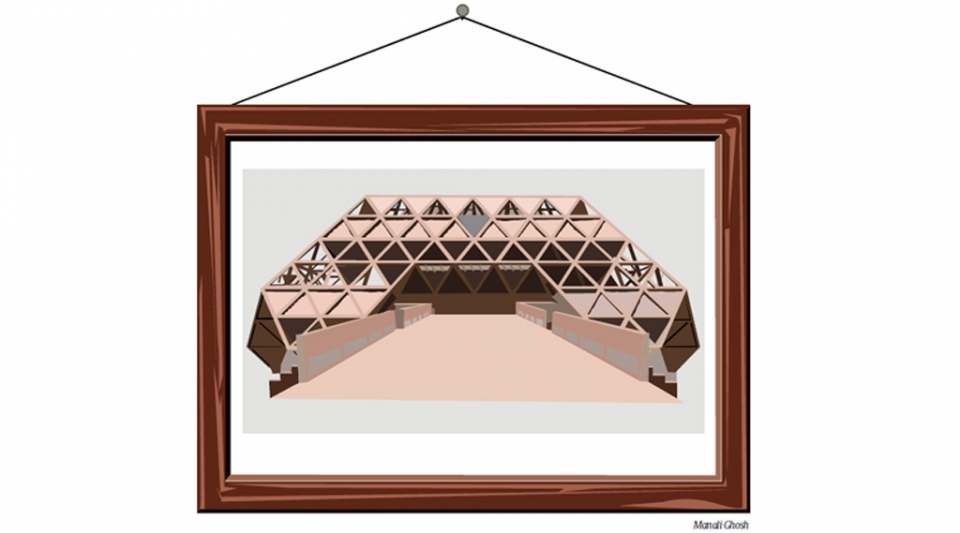Project of replacing Pragati Maidan’s structures ignores their significance as cultural artefacts that commemorate a distinctly Indian approach
The current discussion about the upgrading of facilities at Delhi’s Pragati Maidan, pending a court-ordered stay on their demolition, has called for the replacement of the so-called “permanent” exhibition structures. Built in 1972 to the designs of architect Raj Rewal and engineer Mahendra Raj, these monumental clusters of pyramidal structures comprise the exhibition halls — such as the Hall of Nations and Hall of Industries — that have been the landmarks of the fairground for over 40 years.
....
It seems reasonable, therefore, to expect that some of these facilities will require upgrading from time to time to accommodate changing exhibition needs and, not the least, to continue to express progress. The urgent question this raises is how do we want to move forward, and what, if any, of the past do we wish to carry forward with us?
It is worthwhile to recall here that “progress” is not just about “any” future, but about our future, and the journey by which to arrive at it. What do we know of the existing facilities, and how do we decide what to hold on to as we move forward? In this case, it depends on whether we see these exhibition structures as merely a technical shell for the activities they contain, or as buildings that are also cultural artefacts with intrinsic value.
In our considered view, we have no doubt that the permanent exhibition structures are iconic artefacts, integral to the built fabric and identity of modern Delhi that most certainly should be carried forward. Indeed, as we and others have argued previously, these structures have an even broader significance. In our book, India: Modern Architectures in History, we note, “The principal function of the exhibition complex, apart from sheltering the exhibited contents, was to represent the modernity and productivity of the nation in the most progressive light… [and] the bold cluster of voluminous exhibition halls … clearly emulated the architecture and technophilia of recent World Fairs at Osaka and Montreal with their structural system of octahedral lattice space frames. But the predictable symbolism and derivative style were … inadvertently given renewed meaning and vitality, as later commentators were to observe, by the [ingenuity] and sheer monumentality of the way in which these structures were ultimately built. Contrary to the logic of the structural system employed, which called for lightweight, factory-produced modular assemblies in steel or aluminium, the structures were necessarily constructed by the labour-intensive technique of cast in-situ concrete, which remained the considerably cheaper option in the still only semi-industrialised state of the Indian building industry. Successfully accomplished on time and within budget through this [creatively] improvised [but] effectively ‘hand-made’ approach, this was an example of what has more recently been celebrated among the entrepreneurial elite of Indian business… as jugaad or frugal engineering.
